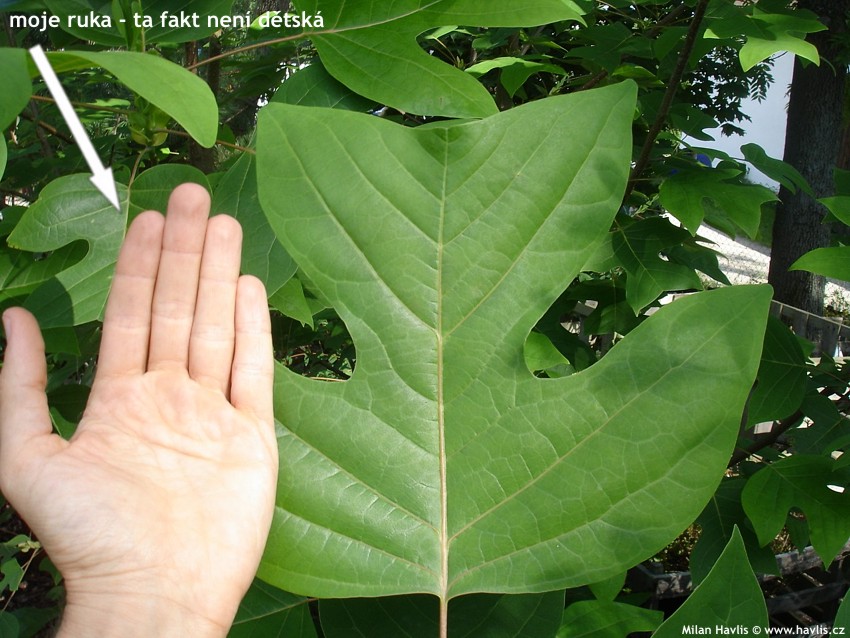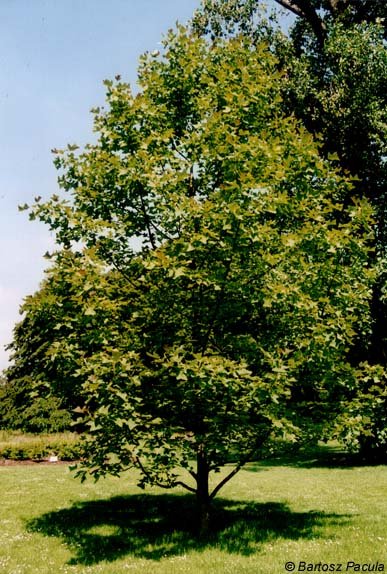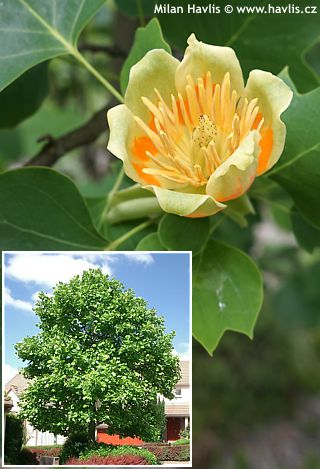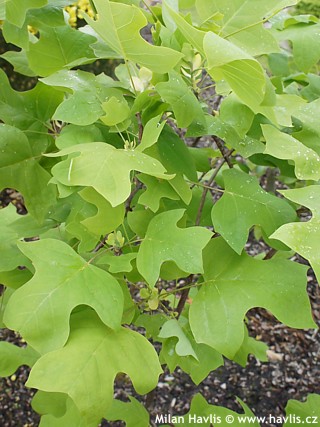Liriodendron chinense Chinese tulip tree
Liriodendron
Tulip tree has been in cultivation in our country for a long time. You will find large specimens in old royal gardens where they were planted more than 100 years ago by collectors and enthusiasts. You will also find plants of substantial sizes in city parks where landscapers began planting them more or less as a fashionable item. In most if not all cases those trees are liriodendron tulipifera i.e. American version of tulip tree. There is, however, a Chinese version of this tree which was long believed to be too tender for our climate. And that is a pity for two reasons: first – it is not right, and second - it offers extraordinary foliage.
Chinese tulip tree is in many aspects similar or identical to its American relative as far as habit, growth rate, or flowering. But the most prominent give-away is its foliage. The deciduous leaves are very large and deeply lobed. The saddle-shaped description of the leaf shape is no longer applicable for Chinese tulip tree. The leaf has even number of lobes = 4. They are very long, rounded and do not have tips. The size is anything between 15-25 cm in length, some sources even say that they can be up to 30 cm across in Asia under good conditions on adult trees. The colour is bronze-red as they emerge, changing to soft green in summer and deep yellow in autumn.
The flowers appear in early summer at the tips of branches. They are tulip-shaped, greeny-yellow with a broad orange band. They may be inconspicuous from a distance but are definitely very attractive up close. Only trees older 10 or sometimes more years are ready to produce flowers.
Pruning is not needed. But beware that this is a large tree so if you need to limit its size prune young plants at the end of winter before buds burst out. Flowering trees should be pruned after flowering. A tree with leaves larger than a hand of a big man is definitely worth some extra effort.
Grow it in full sun or partial shade with some direct sun during the day. It needs fertile, preferably acidic, moist but well-drained soil. It is usually pest and disease free. Young plants should be staked for 2-3 years to establish well and to have a straight trunk. We tested its hardiness down to -27°C (USDA zone 5b) without any visible injury.
Last update: 29-12-2009









































